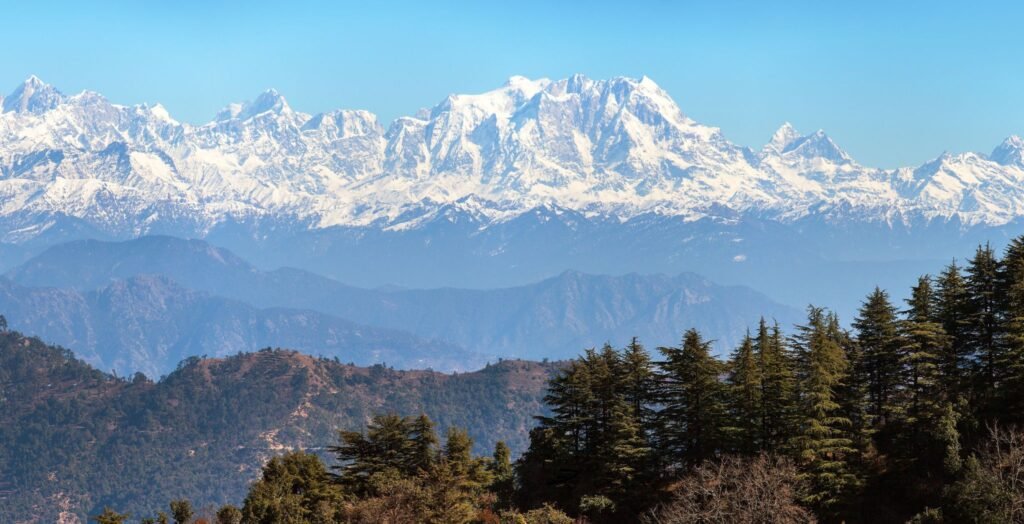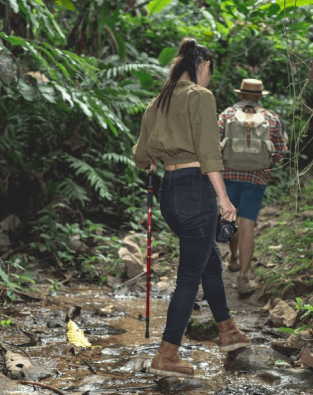Chopta in Uttarakhand should be at the top of your list if you’re considering a getaway where untouched nature, calm spirituality, and satisfying trekking all come together.
Hidden in the heart of the Himalayas, Chopta is a little-known hill station that is gaining recognition for its stunning scenery and its strategic location as a starting point for some of the most popular destinations and trekking routes in the area.
Chopta is a shining example of eco-tourism and responsible travel because of its location within the Kedarnath Wildlife Sanctuary.
Why Chopta Is So Unique
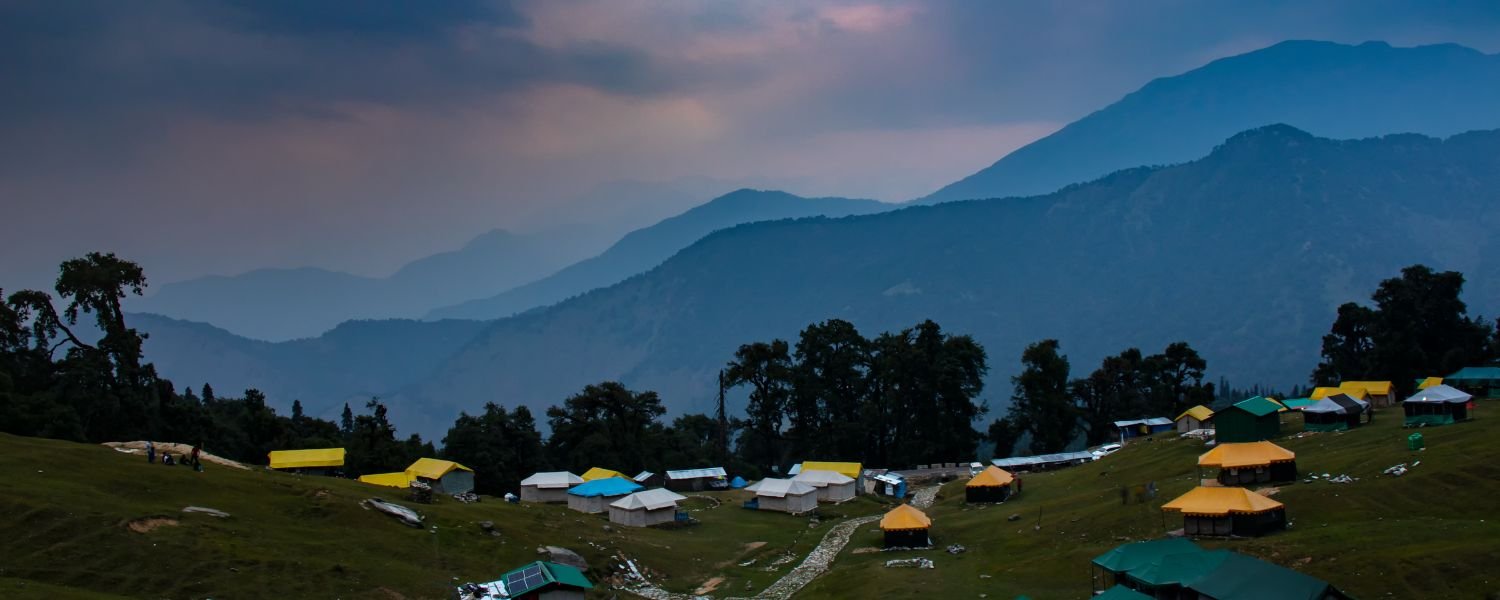
One of Chopta’s distinguishing characteristics is its placement inside the Kedarnath Wildlife Sanctuary. Numerous rare and endangered Himalayan species can find refuge in this expansive sanctuary in the state of Uttarakhand.
The biodiversity here is impressive, covering colourful birds like the Himalayan monal pheasant, to the unreachable musk deer and Himalayan black bear.
Chopta offers a rare opportunity for those who enjoy wildlife and bird-watching to experience nature in its purest form.
Recent efforts aim to promote eco-friendly tourism practices, and the sanctuary’s protected status has helped maintain its rich flora and fauna.
It means that tourists can experience the Himalayas’ unadulterated beauty while also knowing that their trip contributes to conservation efforts.
Travellers who value sustainability and a close relationship with nature will be drawn to Chopta in 2025 as a serene, uncrowded substitute for more commercialised hill stations.
Chopta: Where Is She? Geographical and Spiritual Importance

Located in Uttarakhand’s Rudraprayag district, Chopta is situated at an elevation of approximately 2,680 meters (8,793 feet) above sea level. Rolling alpine meadows, thick pine and deodar forests, and expansive views of the majestic Himalayan peaks make up the captivating landscape.
It is understandable why Chopta is referred to as India’s “Mini Switzerland.”
In addition to its natural beauty, Chopta is well-known for serving as the starting point for two of the most important pilgrimage and trekking sites in the area: the Chandrashila peak and the Tungnath Temple.
At 3,680 meters above sea level, Tungnath is regarded as the world’s tallest Shiva temple.
From Chopta, a challenging walk winds through lush forests and meadows spread with wildflowers.
Chandrashila, which offers perhaps some of the most breathtaking sunrise views over the Himalayan range, including peaks like Nanda Devi and Trishul, is reached after an uphill struggle beyond Tungnath.Because of this combination of nature and spirituality, Chopta is a haven for hikers as well as those looking for relaxation and renewal in the middle of the mountains.
The Best Time to Go to Chopta
The timing of your trip to Chopta can have a significant impact on your experience. To assist you with planning, here is a thorough breakdown by season:
Winter Wonderland, January–March
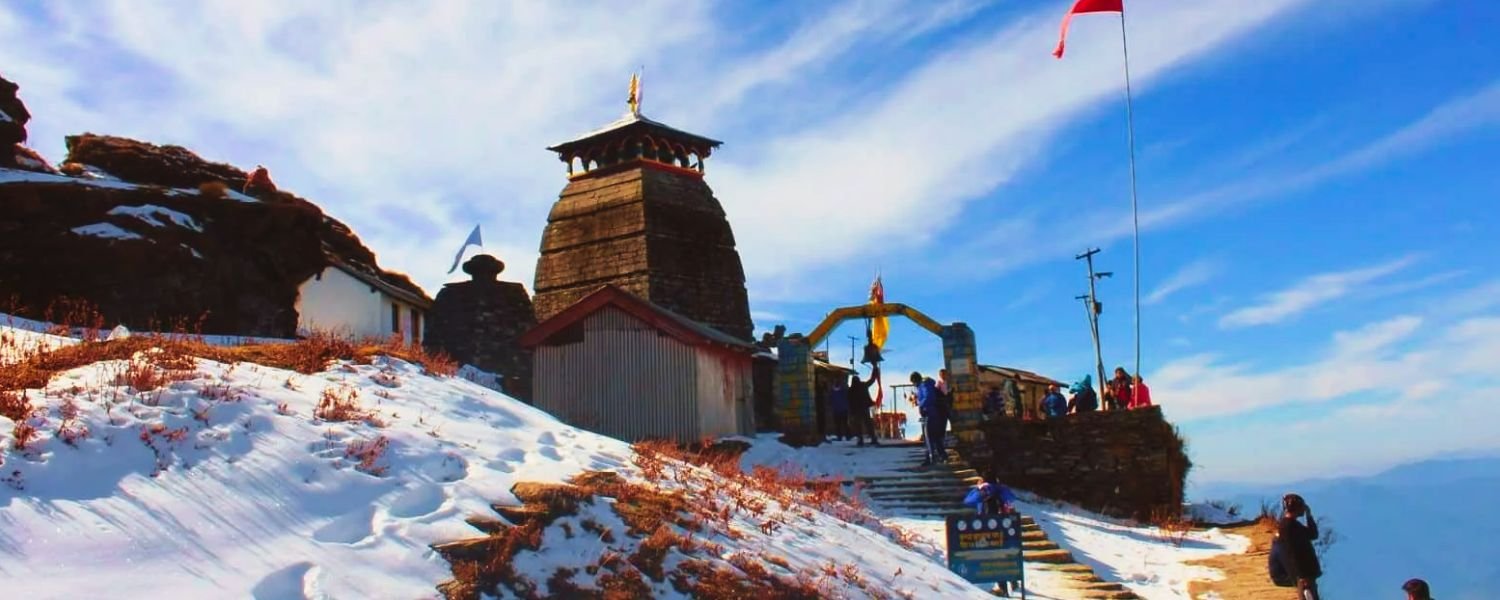
Chopta becomes a captivating white paradise in the winter if you’re looking for snowy scenery.
The area becomes an ideal winter trekking destination when snow covers the forests and meadows. For seasoned hikers with the right equipment, the snow-covered route to Tungnath provides an exciting adventure.
Warm clothes are necessary because the temperature can drop below freezing, especially at night.
Additionally, there are fewer tourists in the winter, giving you a closer look at the local way of life and the environment.
However, since some camps and guesthouses close during the most severe months, be ready for fewer lodging options.
Spring Awakening, April–June

In Chopta, spring is undoubtedly the most picturesque season. As the snow melts, verdant meadows dotted with rhododendrons and primroses appear.
The weather is pleasant and calm, making it ideal for trekking and exploring, and the forests have returned to their vivid colours.
For nature photographers and anyone who appreciates seeing the rebirth of nature following winter, this is the perfect time of year.
Because migratory species are beginning to arrive, it’s also a great time for bird watchers to visit. The moderate number of tourists creates a calm yet vibrant atmosphere.
Monsoon Magic (With Caution) from July to August

Heavy rainfall during the monsoon season covers the hills and frequently causes landslides and roadblocks. Slick trails make trekking dangerous. But the rain revitalises the forests, creating a lush, magical scene.
Travelling during the monsoon season can be a distinctive, off-the-beaten-path experience if you’re an adventurous person who enjoys solitude and the scent of wet earth.
If you decide to travel during this time of year, make sure you have waterproof clothing and sturdy shoes, and keep an eye on weather reports and travel advisories.
Clear Skies and Excellent Trekking from September to November

Chopta is blessed with clear skies, clean air, and comfortable temperatures after the monsoon. Miles of breathtaking Himalayan scenery are revealed when the monsoon rains remove pollution and dust.
Most people agree that this time of year is ideal for trekking and sightseeing.
With wildflowers in bloom and plenty of wildlife to see, the Tungnath-Chandrashila trek is in excellent shape. Both serious trekkers and leisure travellers are drawn to this time of year.
The accommodations are fully functional, and the pleasant weather encourages you to visit neighbouring villages and sanctuaries outside of Chopta.
December: The chill of early winter
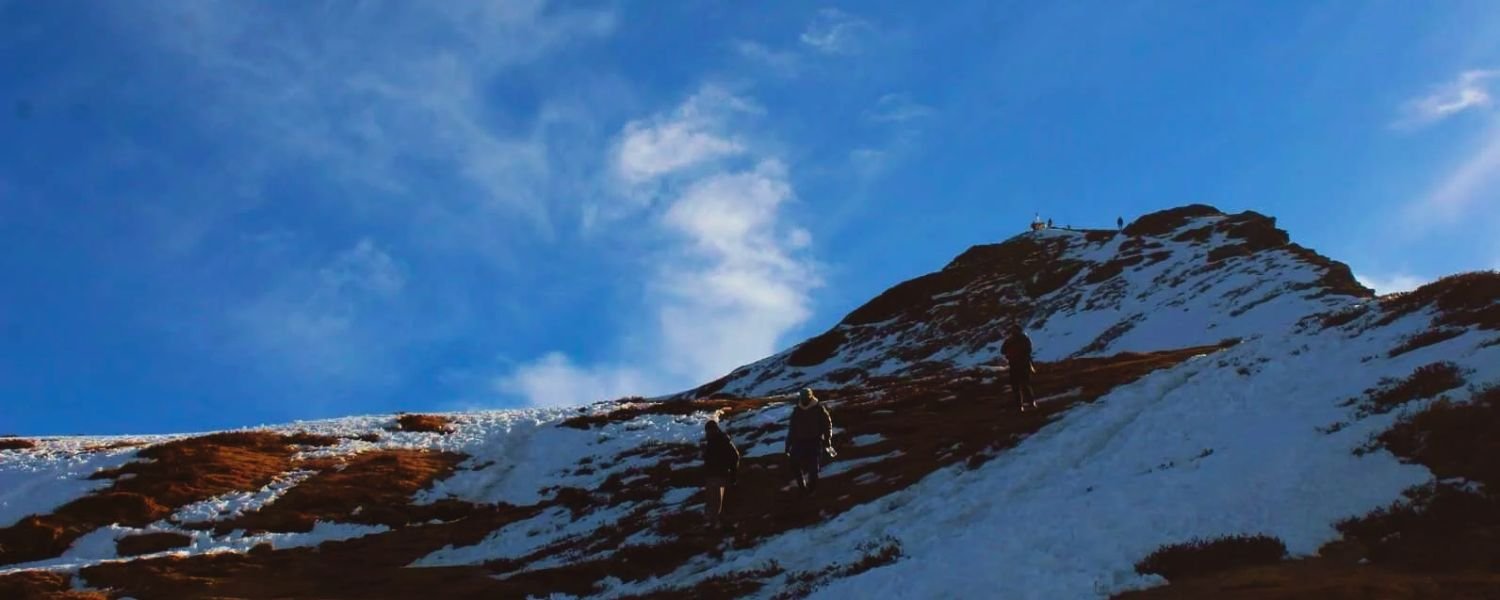
Winter officially begins in December, when temperatures sharply decline, particularly at night. As the month draws to a close, random snowfall starts, providing a sneak peek at the upcoming snowy season. It becomes more peaceful to take in Chopta’s quiet surroundings as the number of tourists begins to decline.
How to Get to Chopta: A Simple Journey

Although Chopta’s remote location may seem difficult at first, getting to this Himalayan sanctuary is simple with a little preparation.
Delhi is the primary entry point for visitors going to Chopta. By private vehicle or taxi, the approximately 470-kilometre road trip takes 10–12 hours. For individuals who would rather not drive, Volvo buses travel overnight from Delhi to Rudraprayag or Rishikesh, from which they can take local buses or shared taxis to Chopta.
From Rishikesh and Dehradun
Easy access is provided by nearby places like Dehradun (210 km) and Rishikesh (230 km). While Rishikesh has good rail and road connections, Dehradun has the closest airport and train station for many tourists.
Many travelers also explore popular Rishikesh places before heading further into the hills. You can take a shared taxi or a private taxi from either town. Although they are less common and take longer, local buses also run.
Railway stations and airports
The most convenient airport is Jolly Grant Airport in Dehradun, which is about 210 kilometres from Chopta. Another, but more distant, option is Pantnagar Airport.
The closest train stations are in Haridwar and Rishikesh, both of which have excellent access to big cities. From here, buses or taxis start the road trip.
Accessibility and Road Connectivity
It can be challenging to navigate the winding mountain roads on the last leg to Chopta during the winter and monsoon seasons. Due to the terrain, the roughly 70-kilometre drive from Rudraprayag to Chopta could take three to four hours.
Access may be blocked by snow in the winter, and travel can be complicated by landslides during the monsoon.
Although shared taxis are more affordable, private vehicles provide the most flexibility. Local buses may be more unpredictable in bad conditions, but they operate frequently during favourable seasons.
Where to Stay in Chopta

Comfort Meets Nature Chopta’s eco-friendly atmosphere is reflected in its lodging options, which range from basic guesthouses to comfortable campsites.
Low-cost guesthouses
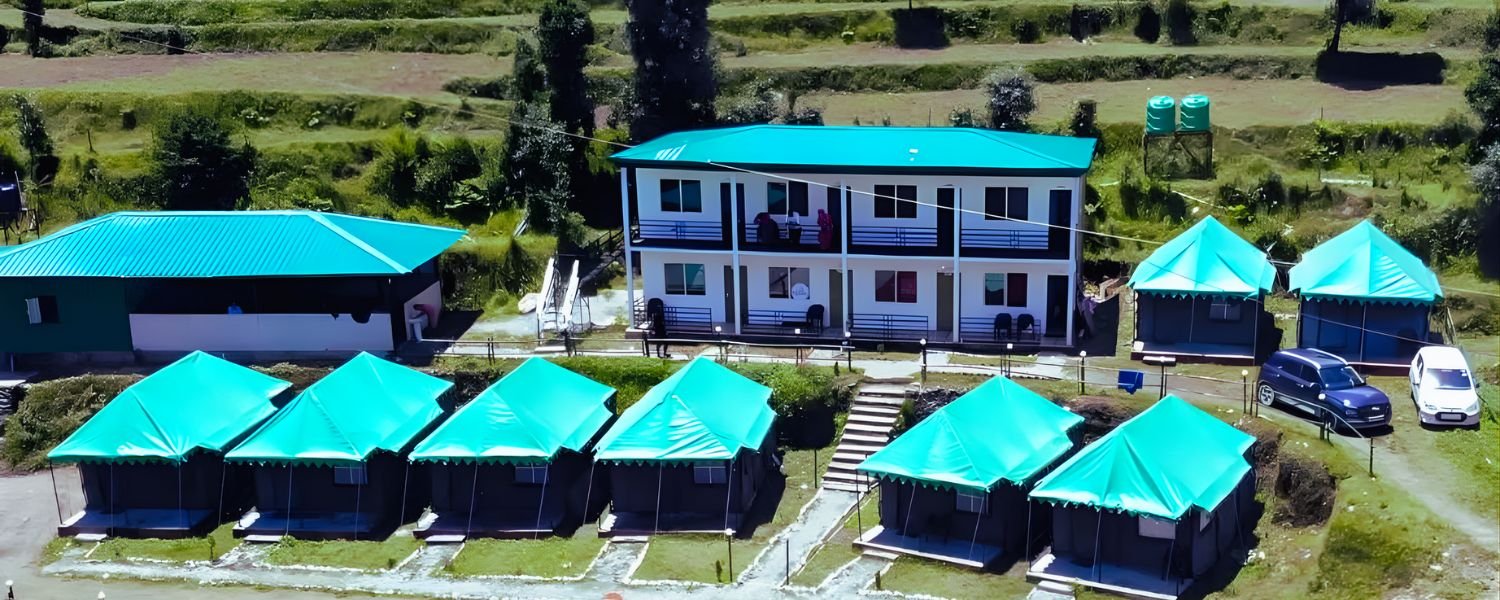
Many simple guesthouses provide warm meals, tidy rooms, and welcoming locals for backpackers and low-budget vacationers.
These guesthouses are perfect for people who want to spend most of their time outside because they offer all the necessities without breaking the bank.
Eco-Friendly Camps and Tents
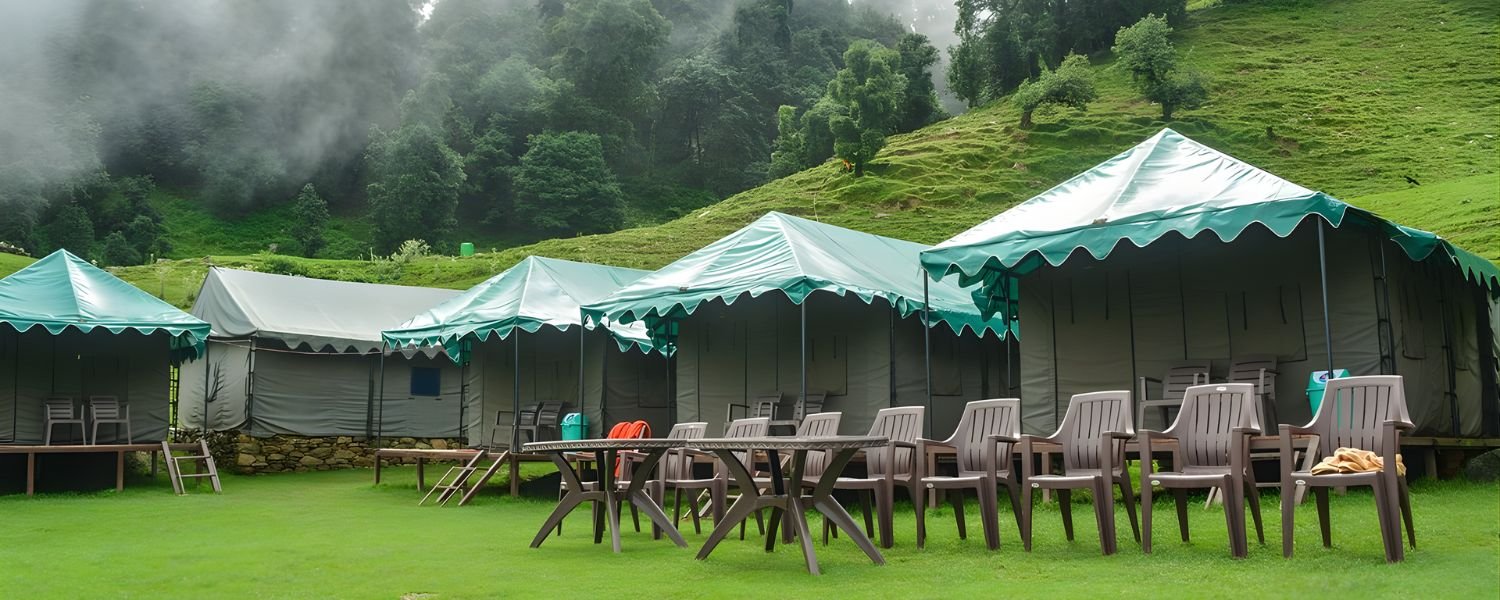
Particularly among hikers and nature fans, camping is becoming a more and more popular choice in Chopta. Eco-friendly camps pitch tents on forest-ringed meadows and frequently enjoy local Garhwali food and campfire evenings.
Without compromising comfort, these camps offer a genuine mountain experience; some even have hot water and comfortable sleeping bags.
Rest Houses in the Forest

In the heart of the sanctuary, these rest houses, which are managed by the Uttarakhand Forest Department, provide reasonably priced lodging.
They offer a special opportunity to remain near wildlife areas and are straightforward but well-maintained. Due to limited availability, reservations should be made in advance.
Top-Rated and Mid-Range Accommodations
In recent years, a few family-run resorts and homestays have appeared, providing cosy accommodations with contemporary conveniences, hot showers, and expansive views. Comfort and environmental awareness are well-balanced in these locations.
Tips for Booking
The best time to book is during the busiest trekking seasons (April–June and September–November), even though many Chopta accommodations are now listed on online booking portals.
Walk-in reservations may be possible for off-season visits, but always have a backup plan in case of severe snowfall or monsoon.
Trekking in Chopta: Soul-Stimulating Paths
With routes ranging from easy walks to challenging mountain climbs, Chopta is a trekker’s dream come true. Here’s a closer look at the most well-liked treks that depart from this base in the Himalayas.
The Tungnath Trek
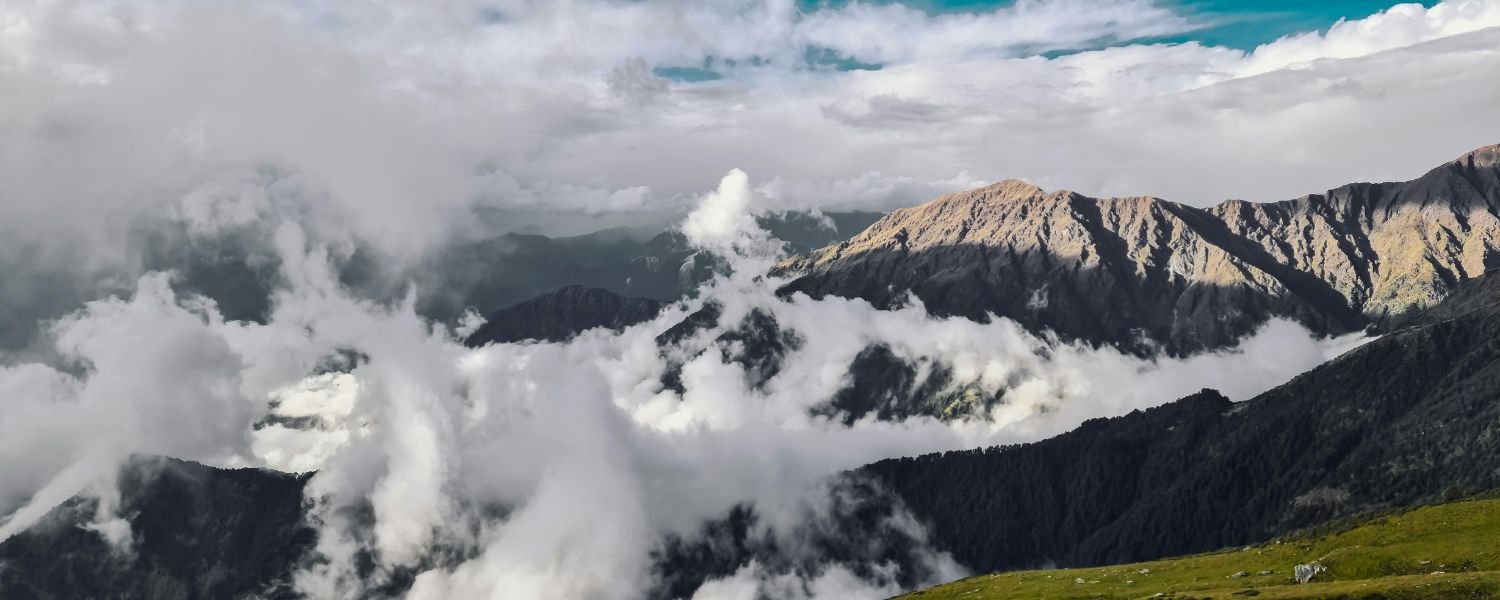
One of the highlights of any trip to Chopta is the trek to Tungnath. It is regarded as moderately difficult and travels about 3.5 kilometres one way.
The temple can be reached in two to three hours by most hikers, making it an ideal half-day excursion.
Tungnath has a deep spiritual meaning and is more than just a hiking destination. It is thought to be one of the Panch Kedar shrines and is the tallest Shiva temple in the world.
When the temple reopens in the summer after being closed for the winter, pilgrims travel from all over India to pay their respects.
Since Tungnath is roughly 3,680 meters above sea level, adapting is crucial. Altitude sickness can be avoided by taking it slowly, drinking plenty of water, and getting enough sleep, particularly if you’re not used to being at high altitudes.
The Trek of Chandrashila
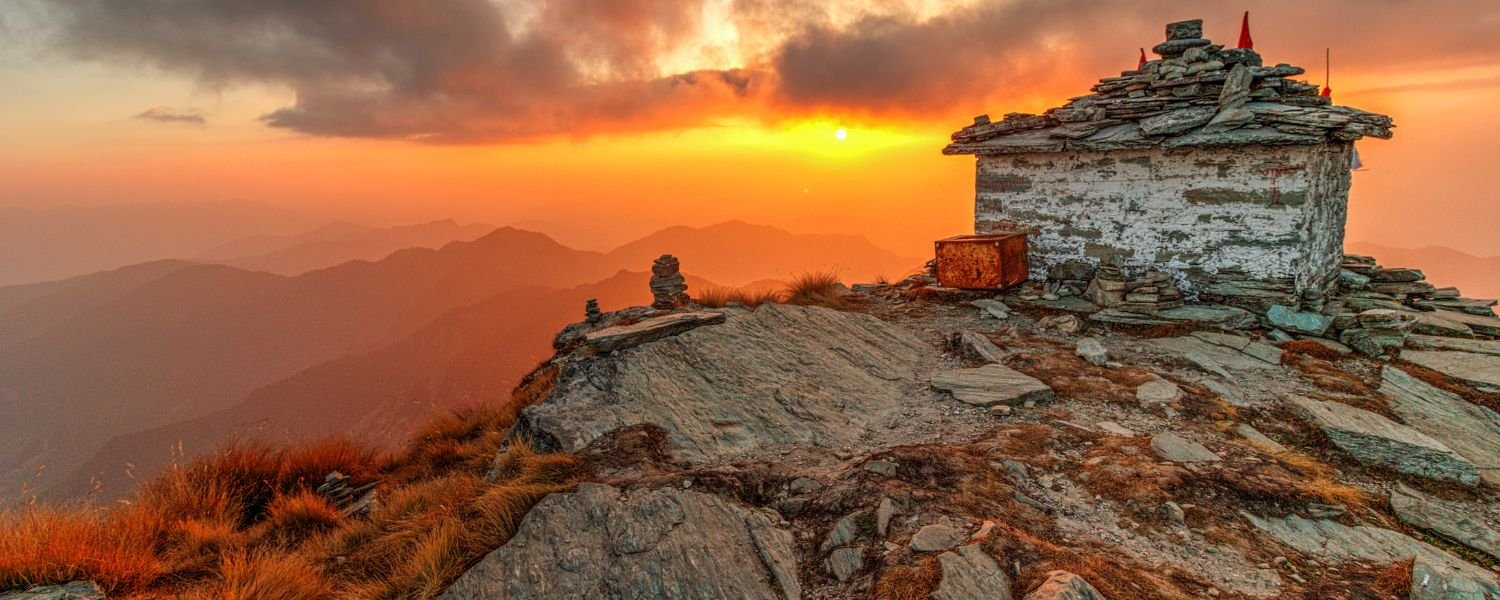
The Chandrashila peak trek continues from Tungnath for an additional 1.5 kilometres of steep climbing for those who wish to push a little further. At 3,690 meters, Chandrashila offers hikers arguably the most breathtaking panoramic views of the Himalayas in the area.
Tall peaks like Nanda Devi, Trishul, Chaukhamba, and even the far-off Bandarpunch range can be seen from this summit. Here, the sky is painted in shades of pink and gold during the sunrise, which is simply unforgettable.
The Chandrashila trek turns into a snow trek in the winter, necessitating experience in icy conditions and appropriate winter trekking equipment. This is an exciting way for daring tourists to take in Chopta’s winter fascination.
Trek Deoriatal
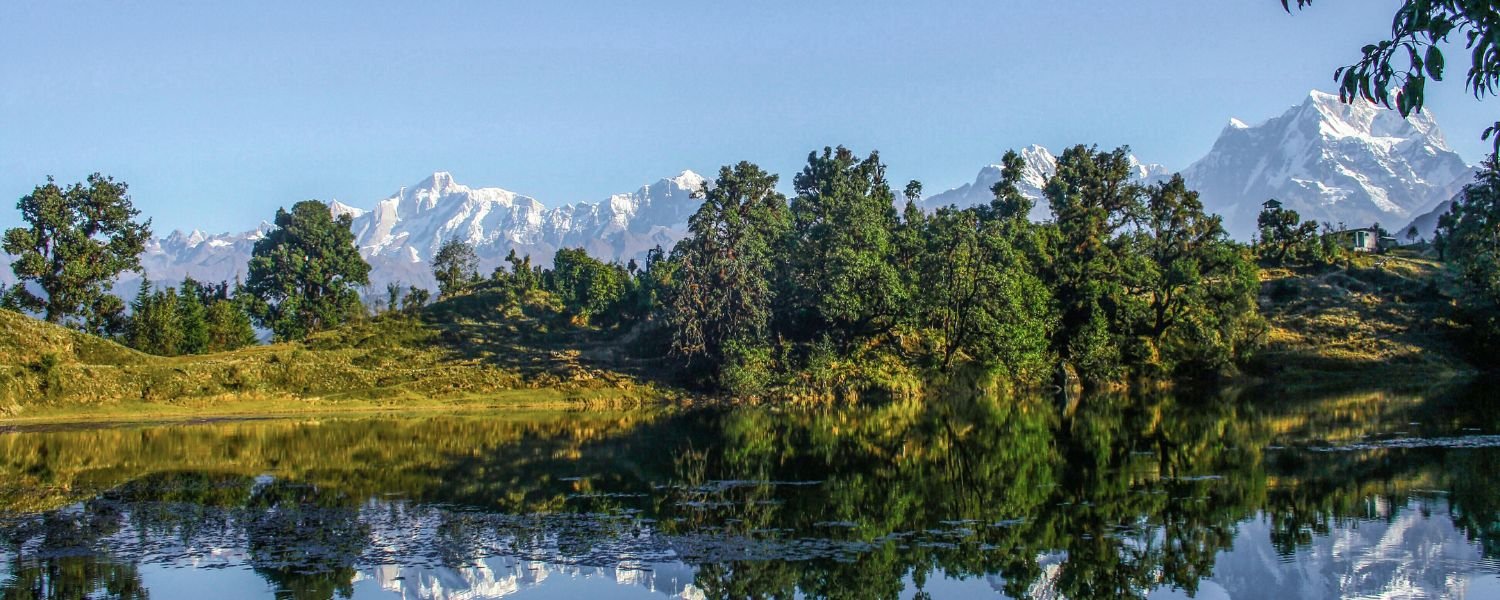
The Deoriatal trek, which begins in the nearby village of Sari, is a good option if you want to go off the usual route. This moderate hike leads to Deoriatal, a fresh high-altitude lake encircled by snow-capped peaks, via alpine meadows and dense forests.
The tranquil lake and its reflection of the surrounding Himalayan giants make this trek a favourite among novices and photographers. It’s a great way to see the more calm aspects of Chopta’s wilderness.
Sleep Under the Stars While Camping in Chopta

Many ecotourism businesses in Chopta encourage camping because they want guests to enjoy nature in a responsible manner.
The most incredible places to camp are close to Chopta itself, as well as places like Duggalbitta and Baniyakund, where the meadows provide open views and easy access to hiking trails.
Most camps run without electricity and rely on lanterns or solar power at night, so be prepared for a rustic experience.
Chopta is one of the most significant locations in India for gazing at stars because of the pure mountain air and lack of city lights.
Picture yourself relaxing by a bonfire, drinking hot tea, and looking up at the Milky Way and other constellations.
Safety Advice
Always have a warm sleeping bag with a sub-zero rating with you.
It can be challenging to deal with unexpected changes in mountain weather, so check the forecasts.
Tell your camp operator or guide what you intend to do.
To avoid forest fires during dry seasons, stay away from open fires.
Activities in Chopta (Not Just Trekking)

The allure of Chopta extends well beyond its hiking routes. You should include the following additional fulfilling activities on your itinerary:
Wildlife Spotting & Bird Watching: Look for the shy musk deer skulking through the forest or the iridescent colours of the Himalayan monal pheasant. The best time of day for sightings is early in the morning.
Stargazing and Night Photography: Chopta provides flawless night skies ideal for astrophotography or just taking in the universe’s beauty, thanks to its low levels of light pollution.
Retreats for Yoga and Meditation: Chopta’s peace and quiet make it a perfect place for yoga and meditation. Deepen your practice with sessions in natural settings offered by a number of local and visiting teachers.
Nature Walks and Village Interactions: Discover the Garhwali culture, traditional crafts, and uncomplicated mountain life in neighbouring villages like Sari or Ukhimath. Engaging with locals greatly enhances your trip.
Food and Essentials in Chopta: What to Bring and What to Expect

The cuisine of Chopta is straightforward but filling, with a focus on vegetarian dishes. Traditional Garhwali dishes like mandua ki roti (millet bread), aloo ke gutke (spiced potatoes), and chainsoo (black gram curry) are served in the majority of restaurants and guesthouses.
Standard staples like chapati, rice, and dal are also available.
After a long day of hiking, the area is dotted with tea shops that serve hot chai and snacks. Although there is bottled water available, it is always beneficial to bring a reusable water bottle with a purification filter when trekking.
Essentials to Bring:
-
Layered clothing to handle fluctuating mountain temperatures
-
High-traction hiking boots for rocky, uneven trails
-
Sun protection: sunglasses, wide-brimmed hat, and SPF 50+ sunscreen
-
Personal first aid kit, including altitude sickness medication
-
Water purification tablets or portable filter bottle
-
Rainproof jacket or poncho, especially during the monsoon season
-
Portable charger or power bank with cables for devices
-
Lightweight, high-energy snacks like dry fruits, protein bars, and nuts
Mobile Network & Facilities: Maintaining Communication in Chopta
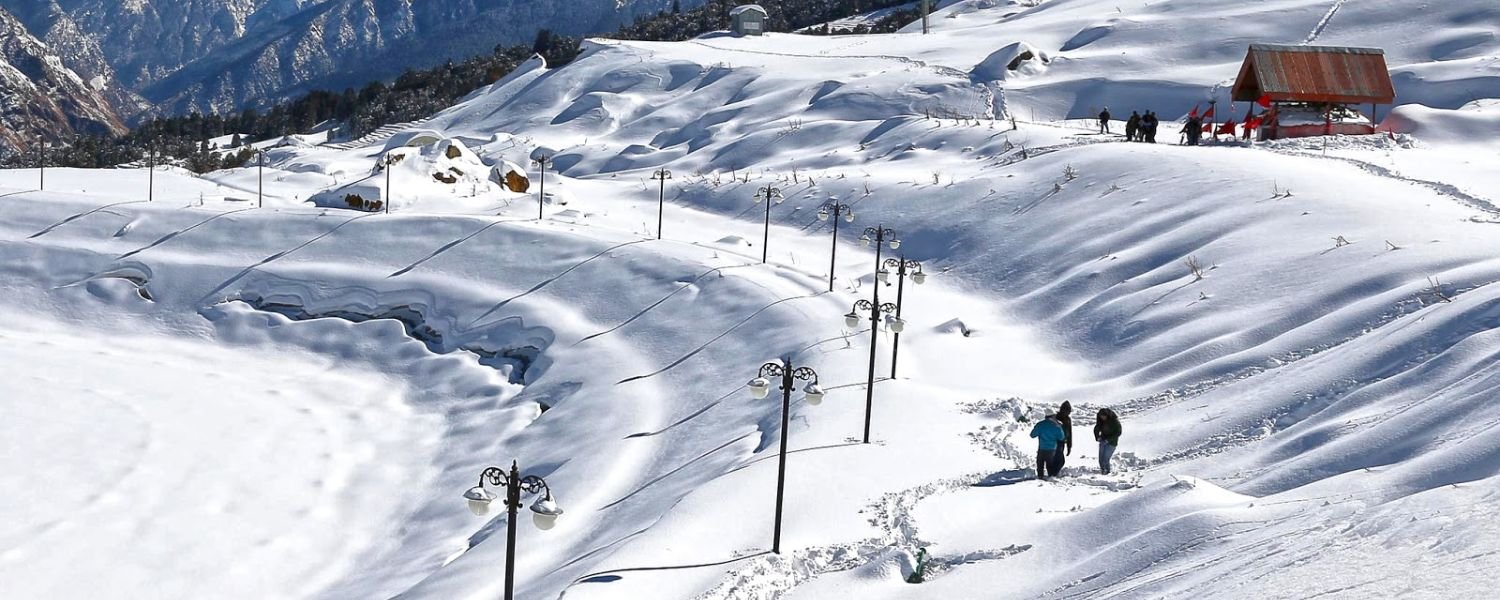
In Chopta, mobile service can be insufficient. The best network coverage is typically provided by BSNL and Jio, but be prepared for spotty signals, particularly in wooded areas or in inclement weather.
Carry enough cash for the duration of your stay in Chopta, as there are no ATMs there. Towns like Rudraprayag and Ukhimath have the closest ATM services.
Chopta’s medical facilities are basic; you’ll need to go to larger towns or Rudraprayag for any serious emergencies. Carrying a basic first aid kit and having travel insurance that covers incidents related to trekking are recommended.
An Analysis of the Budget for a Trip to Chopta

Your travel preferences will determine how much you spend in Chopta, but here is a ballpark figure for a two to three-day trip:
Accommodations: Low-cost camps or guesthouses cost between ₹500 and ₹1500 per night—resorts and homestays in the mid-range range from ₹2000 to ₹4000.
Food: Tea and snacks cost around ₹20 to ₹50, while simple meals cost between ₹100 and ₹300 each.
Local Transportation: From Rudraprayag to Chopta, shared taxis or buses cost approximately ₹300 to ₹500 each way. Round-trip rates for private taxis can range from ₹2000 to ₹3000.
Trekking Guide: Not required but advised; daily rates range from ₹1000 to ₹1500.
Permits: Usually free, but for any updates, check with the forest authorities.
Equipment Rental: For ₹300 to ₹500 per day, certain camps offer snow equipment and trekking poles.
For three days, the estimated total for a budget-conscious traveller is between ₹6000 and ₹10,000 per person.
Eco-Travel Advice & Things to Avoid in Chopta
Travelling mindfully is necessary because of Chopta’s rich culture and complicated environment. To make sure your visit promotes sustainability, follow these crucial guidelines:
Leave No Trace: Reduce the amount of plastic you use, carry back all of your trash, and refrain from littering. Chopta promotes a strict no-plastic position.
Respect Local Culture: Wear modest clothing, particularly when you’re at a temple. Before taking pictures of locals, get their permission.
Prevent Noise Pollution: To preserve the quiet environment of the area and safeguard wildlife, keep noise levels low.
Follow designated trails to avoid soil erosion and to protect delicate ecosystems.
Support the Local Economy: To improve the well-being of the community, purchase handicrafts, dine at neighbourhood restaurants, and employ local tour guides.
FAQs About Chopta
Is Chopta a safe place for women and solo travelers?
Of course. Chopta is regarded as a safe destination for women and solo travelers, particularly during the busiest travel seasons of April through June and September through November. The neighborhood is generally quiet with low crime rates, and the locals are friendly and welcoming. Standard precautions like telling someone about your plans, avoiding trekking alone after dark, and hiring a local guide if you’re not familiar with the trails are advised, though, as they are for any remote mountain location.
Can I go to Chopta in the winter?
Although there are difficulties, it is possible to visit Chopta during the winter months of December through March. Adequate winter gear is crucial because heavy snowfall can block roads and temperatures frequently fall below freezing. Only seasoned hikers prepared for winter conditions should attempt many trekking routes, such as the Tungnath and Chandrashila trails, which may be covered in snow. During this time of year, some lodgings might close, so it’s crucial to check availability in advance.
Does the trek require a guide?
Although experienced hikers can complete the well-marked Tungnath and Chandrashila treks on their own, it is strongly advised to hire a local guide, particularly if this is your first time. In addition to offering invaluable safety assistance, guides enrich your experience by imparting their knowledge of the local flora, fauna, and culture. Due to shifting trail conditions, a guide is necessary for winter treks and the Deoriatal route.
Is Chopta superior to Auli?
Auli and Chopta provide quite different experiences. Auli is a well-liked vacation spot during the winter months because of its reputation for skiing and other winter sports. In contrast, Chopta is a great place for spiritual exploration, nature walks, trekking, and wildlife observation. Chopta is a better option if you want seclusion, ecotourism, and unique Himalayan beauty. Auli leads the way in adventure sports and ski resorts.
